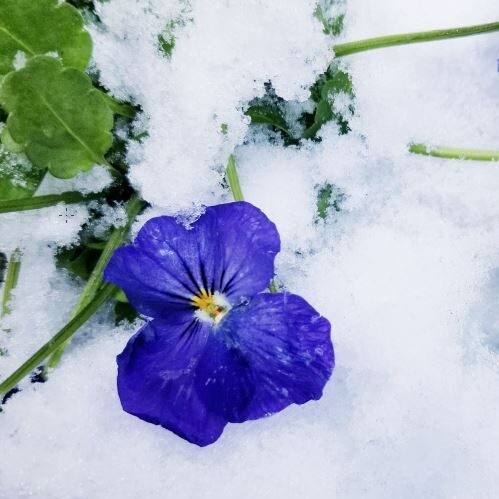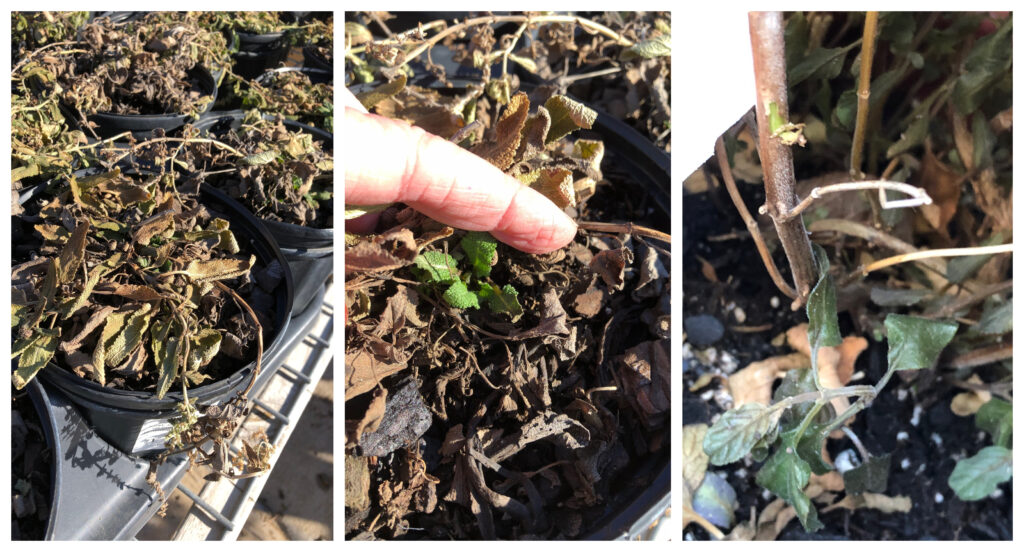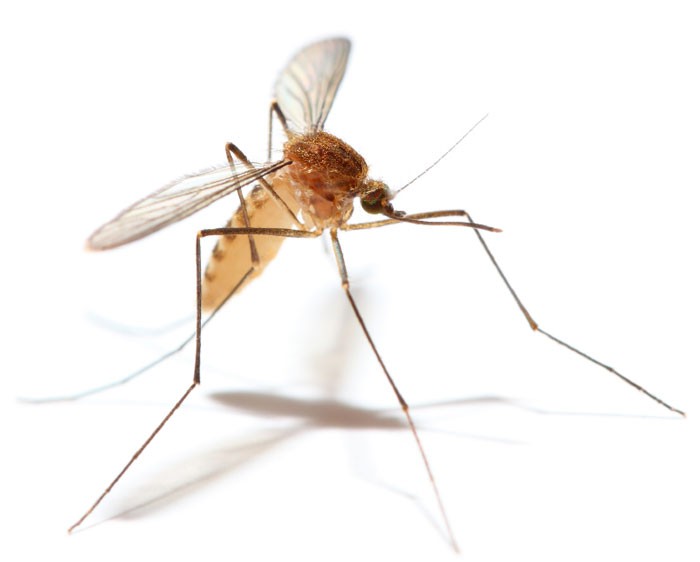Texas summers are tough on us all. Imagine if you – like your landscape –…
How to Save Plants After a Frost

Updated: Feb 2022
As gardeners, we want to save what plants we can after a dramatic weather event like a heat wave or a winter storm.. The Dallas Metroplex has recently been subjected to temperatures that many of us have never experienced before, and we will be dealing with the effects of this extended freeze for some time. The biggest factors that influence a plant’s ability to survive are if the plant is healthy and planted in its proper zone; if trees and perennials have been established for 3+ years; and if the plant had adequate protection (mulch and frost cloth) and was well-watered prior to the freeze. Freeze damage first affects blooms, then buds, then leaves, then stems, then roots. Be patient and watch for visual cues that indicate if the plant will – or will not – return. Assuming your plants were protected from cold, here are some guidelines for going forward on how to save plants after a frost.
How to Treat Frozen Plants
Annuals: Blooming annuals such as pansies and winter color like ornamental kale should come back after they’re watered and have gotten some sunlight. If your annuals don’t recover quickly, take it as an opportunity to re-invigorate pots with spring color. NHG has the latest seasonal blooms coming in weekly.
Herbs & Vegetables: Many of our tough, popular herbs like mint, thyme, and sage should be fine, along with cruciferous vegetables like broccoli and cabbage and root veggies like carrots and beets. Herbs and veggies with tender foliage like dill, chives, and lettuce won’t survive, but they’re easy to replace and we have a good selection in stock. Early spring is also the time to get tomatoes started.
Perennials: Established perennials will probably be fine. There may be die-back of leaves on evergreen shrubs like boxwood, and deciduous perennials such as barberry, vitex, and hydrangeas may need a good shaping up to remove dead wood. Shrubs that flower early like Indian hawthorn, camellias, and azaleas may have fewer blooms. More herbaceous perennials like aspidistra, ferns, and giant leopard plant may die back to the ground, but don’t give up: these tough shade-lovers usually re-emerge. If you’re taking care of shrubs, it’s important to be patient and watch for signs of new foliage to emerge. If you suspect die-back on woody stems, scrape the surface of the stem with a fingernail or make a small cut with a knife to see where dead brown wood stops and green begins. This is your guide as to how much to cut back. Some perennials like Turk’s cap and salvia often die back almost all the way to the ground; the amount of pruning will be controlled by how much dead wood you find. Cutting back before the plant has a chance to come out of dormancy may lead to accidentally cutting off stems where blooms would occur.

Succulents: Unfortunately, succulents – with their juicy, water-filled leaves or paddles – generally don’t survive an extended freeze; remove all smelly, soggy, or otherwise rotted stems and foliage. If you find “pups” – the vegetative reproductive structures of a succulent – around the base of the plant, clear away any dead foliage to expose pups to light and sun.
Trees (including fruit trees): Established trees should be fine, though again, there may be die-back at the tips of the stems. Fruit trees that were in bloom or bud will probably lose this fruit, and this year’s fruit production will be impacted. Unfortunately, there’s nothing to be done in this case…just wait and hope for a better crop next year.
Groundcovers: Most established groundcovers – Asian jasmine, liriope, mondo grass, for example –should be fine. Giving it a good trimming then fertilizing with a nitrogen-based lawn fertilizer like Texas Tee will promote the greening of groundcovers and encourage new growth.
Lawns: Dormant lawn grasses such as Bermuda and San Augustine may show damage after temperatures rise. Any feeding or other treatments should wait until then; mow 2-3 times after consistent growth is occurring then fertilize.
How to Prevent Freeze Damage to Maintain Healthy Plants
Once you have assessed and addressed damage to plants, commit to good gardening practices to keep your garden healthy year-round:
- Mulch, mulch, mulch. Mulch breaks down and improves soil over time, protects against cold in winter and holds in moisture in summer, suppresses weeds: a great – and inexpensive- component of any
well-maintained lawn, flowerbed, or pot. - Fertilize regularly with the right kind of fertilizer. We like the Espoma “-Tone” line – Holly-tone, Tomato-tone, Flower-tone, etc. These organic, low-formulation fertilizers contain beneficial mycorrhizal fungi which enrich your soil and stimulate plants to take up nutrients. Espoma’s Bio-tone is great for refreshing poor-quality or nutrient-poor soil, or for revitalizing the soil in last year’s decorative pots.
- Make room for natives. Native plants have evolved to tolerate our crazy Texas weather, hot or cold. They are generally drought-tolerant, easy to care for, and attract beneficial pollinators.
Gardening is challenging enough without snow and temperatures nearing 0 degrees, but North Haven Gardens is ready to help you and your garden flourish this spring. Check our website – nhg.com – for helpful “how-to” guides, and come in to browse or visit with a Garden Advisor. We have a wide array of plants arriving every week, including everything you need to create your special space this spring.
Become a Grow Member today and every dollar purchased by GrowCard customers, at a regular price, earns a reward point. Every 200 points earns a $10 reward voucher that can be redeemed any time during the Reward Season. (Reward points do not accrue on already discounted purchases, and reward points expire at the end of each season)


